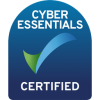Demystifying Risk Assessments
Under the Management of Health and Safety at Work Regulations 1999, all employers have a statutory requirement to protect their employees, and others, from harm or injury, through their actions or undertakings.
Risk management is a step-by-step process for controlling health and safety risks caused by hazards in the workplace and can be completed by yourself or by appointing a competent[5] person to help you.
For most small, low-risk businesses the steps you need to take are straightforward and the following steps provide an explanation.
Identify the hazards
Take a critical look around your workplace and think about what may cause harm or injury to your employees and others, this is identifying the hazards.
Whilst doing so you should think about:
- how people carry out their work activities including how plant and or equipment is used
- are any chemicals or substances used
- what safe or unsafe work practices exist
- the general condition of your premises
Consider your previous accident and ill health records as these can help you identify less obvious hazards.
Take account of non-routine operations, such as maintenance, cleaning or changes in production cycles.
It is not all about identifying hazards that can result in potential injuries that can be seen such as cuts or grazes, think about hazards to health, such as noise, use of chemicals and causes of work-related stress.
For each hazard, think about how employees, contractors, visitors or members of the public might be harmed.
Involve your employees in the process as they will usually have good ideas, because they are the ones carrying out the tasks.
Ensure that you are considering certain groups of workers and how they may be harmed as they may require particular requirements, such as young workers, people with disabilities, new or expectant mothers, and migrant workers whose first language may not be English
Assess the risks
Once you have identified the hazards, you need to assess the level of risk by deciding how likely it is that someone could be harmed and how serious it could be.
You should decide:
- Who might be harmed and how
- What you are already doing to control the risks
- What further action you need to take in order to control the risks further
- Who needs to carry out any actions
- When the actions are needed to be completed by
Control the risks
Look at what you are already doing, and the controls you already have in place.
Things to consider would be :
- Can you get rid of the hazard altogether?
- If not, how can you control the risks so that harm is unlikely?
If you think that your current controls are not adequate then will need further controls, and should consider:
- redesigning the job
- replacing the materials, machinery or process
- organising your work to reduce exposure to the materials, machinery or process
- identifying and implementing practical measures needed to work safely
- as a last resort providing personal protective equipment and making sure workers wear it
Put the controls you have identified in place. You’re not expected to eliminate all risks, but you need to do everything “reasonably practicable” to protect people from harm by reducing the risk.
“Reasonably practicable” means balancing the level of risk against the measures needed to control the real risk in terms of money, time or effort.
Record your findings
Once you have identified
- the hazards which may cause harm or injury
- who is at risk and how
- and identified your current control measures along with any additional controls that may be necessary
you must record your significant findings if you employ 5 or more people.
Once you have completed your risk assessments they should communicated to those individuals identified as at risk, to ensure that they are aware of the hazards and the control measures that you have put in place to reduce the risk of injury or ill health.
Periodic review of your controls
Once recorded, you must review the controls you have put in place to make sure they are working, which should be completed at least annually.
You should also review them if:
- they may no longer be effective or valid
- if there are changes in the workplace that could lead to new risks such as changes to:
- staff
- a process
- the substances or equipment used
- after any accidents or near misses
- consider a review if your workers have identified any issues or problems
Update your risk assessment record with any changes you make and communicate those changes to your employees.
If you wish to get started on the road to compliance then you may wish to use our simple risk assessment template to record your findings. Simply get in touch to access our template by emailing hello@howarths-uk.com.
The Health and Safety Executive have put together a simple short video giving visual and audio explanation on the risk assessment process which can be accessed through the following link if required:
HSE – Risk Assessment Video

